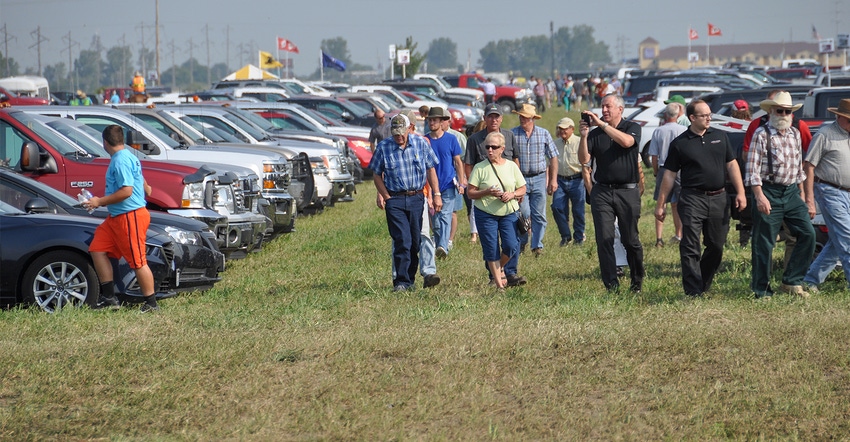
When Farm Progress Show visitors step out of their trucks, cars or buses and onto one of the busy parking lots, they step on host farmer David Brix’s territory. Brix farms and prepares 70 acres of wheat and 70 acres of alfalfa on the show grounds for parking — a task that’s not for the weak at heart.
“If it was like 2005 every year, we’d never do it again,” he says. “But we knew it would get better, and it has.”
Twelve years after the Farm Progress Show moved to its biannual permanent home in Decatur, Ill.,, Brix says everyone understands what to do and when to do it. What started as weekly, and sometimes daily, phone calls and meetings have turned into three or four meetings a year.
“It just goes to show you how smooth things go now,” Brix says. “Everyone understands their role and makes it happen.”
Why was 2005 so painful? Seeding and watering the new show-site grass was a never-ending battle, Brix notes. “That year was just nonstop.”
Working the parking lot ground is easier now, but it still requires management. There are three main parking lots: two are seeded to alfalfa and one is wheat-and-soybean rotation.
The 2015 Farm Progress Show marked the last year for one of the initial alfalfa plantings. In 2006, Brix seeded the south parking lot to alfalfa. That crop of alfalfa lasted an incredible nine years.
“We would have torn them out sooner, but they kept doing really good on yields,” Brix notes. “Wild mustard started to creep into the south parking lot field. So, it was time to start fresh.”
The second alfalfa lot went six years before being torn out and reseeded in 2011.
Brix thinks the show is one of the big reasons the plantings have done so well for so long. In non-show years, he’ll get four cuttings per field. In show years, his third and final cutting is done prior to the show.
“I’ve never been able to do a post-show cutting on any of the fields,” he says. “I think that slight break has allowed the crop to recover more in odd years. That’s probably why they’ve performed so well for so long.”
Brix uses a wheat-and-soybean rotation for the east exhibitors’ parking lot. He plants soybeans during off years and wheat in the fall before the Farm Progress Show.
“We tried alfalfa every other year, and it would get tore up with setup and exhibitors,” Brix explains. “We need bare ground before the crews show up.”
He harvests the wheat crop in July so the landscaping and display companies have a clear area to set up trailers and campsites.
The alfalfa acres are a different story. Brix sells the first hay cutting locally and ships the remaining cuttings to a broker in Alabama and Mississippi. The funny thing is, Brix says, he doesn’t remember how that relationship started 12 years ago.
“I’ve never met the guy,” he adds. “We’ve just talked on the phone.” The first time Brix shipped his bales south was a little nerve-wracking. “That first year was a little scary,” he says. “But he got the hay and liked it, and I got the check and liked it, so we’re good to go.”
The Farm Progress Show is Aug. 29-31 in Decatur, Ill. For more information, visit FarmProgressShow.com.
Catch a Balance GT Courtesy Shuttle
For visitors attending this year’s Farm Progress Show, keep an eye out for the Balance GT Courtesy Shuttles. These extra-long “stretch” golf cars will make a continuous loop through the exhibit field and stop at predetermined locations evenly spaced throughout the grounds, transporting visitors a little closer to their destinations. Walking all the streets at the Farm Progress Show can be tiring, so be sure to take advantage of this service.
About the Author(s)
You May Also Like




